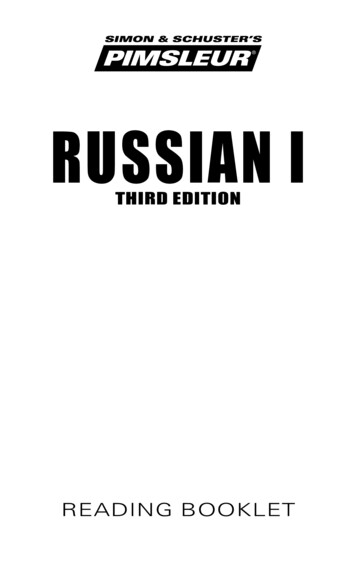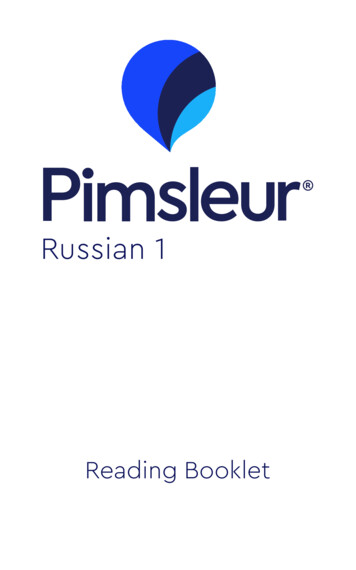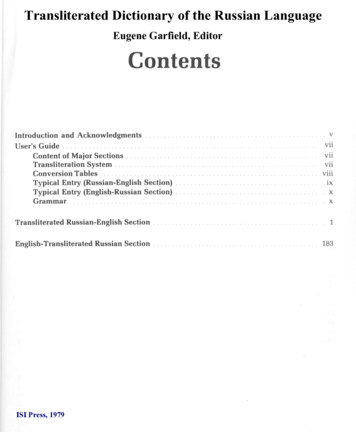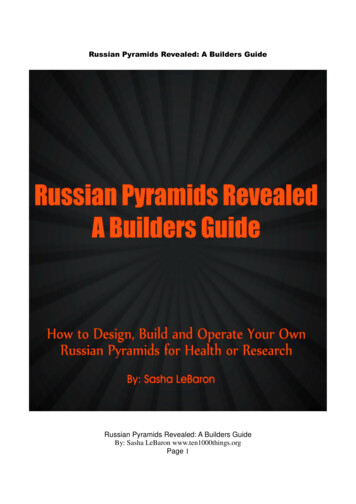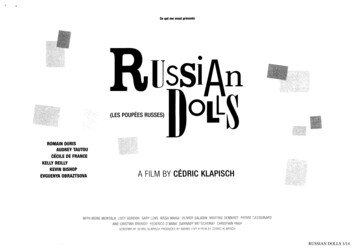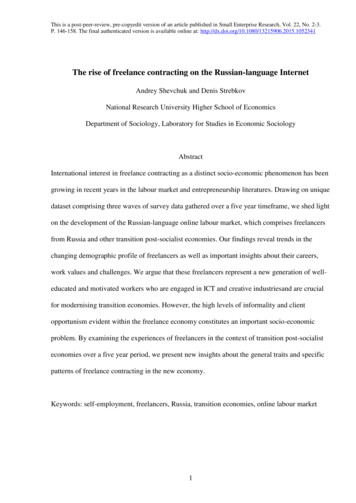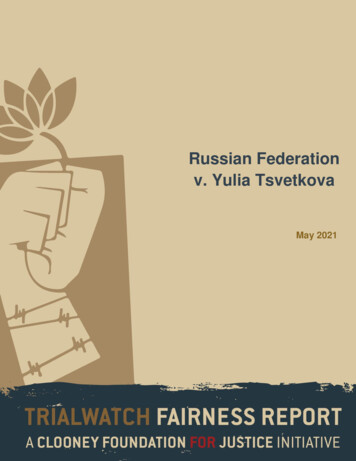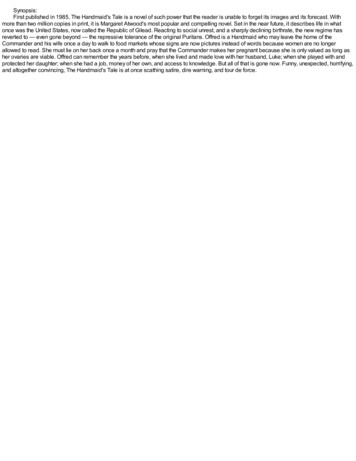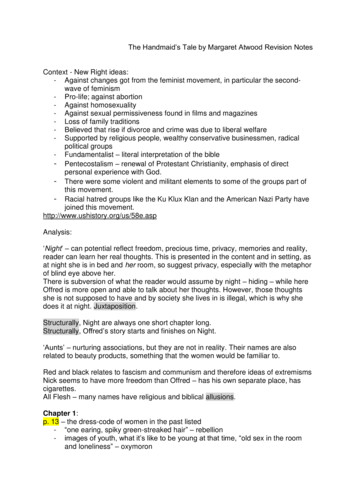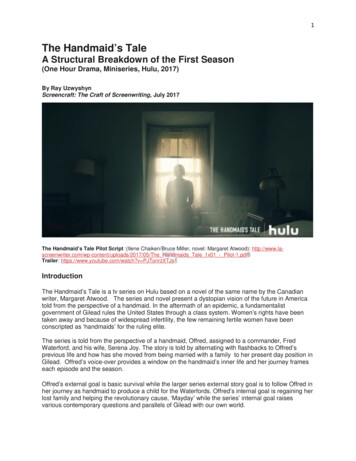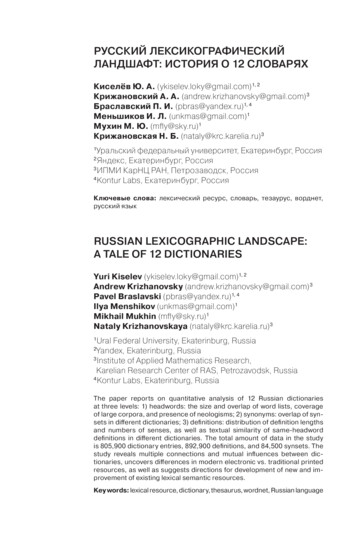
Transcription
Русский т: история о 12 словаряхКиселёв Ю. А. (ykiselev.loky@gmail.com)1, 2Крижановский А. А. (andrew.krizhanovsky@gmail.com) 3Браславский П. И. (pbras@yandex.ru)1, 4Меньшиков И. Л. (unkmas@gmail.com)1Мухин М. Ю. (mfly@sky.ru)1Крижановская Н. Б. (nataly@krc.karelia.ru) 3Уральский федеральный университет, Екатеринбург, РоссияЯндекс, Екатеринбург, Россия3ИПМИ КарНЦ РАН, Петрозаводск, Россия4Kontur Labs, Екатеринбург, Россия12Ключевые слова: лексический ресурс, словарь, тезаурус, ворднет,русский языкRussian Lexicographic Landscape:a Tale of 12 DictionariesYuri Kiselev (ykiselev.loky@gmail.com)1, 2Andrew Krizhanovsky (andrew.krizhanovsky@gmail.com) 3Pavel Braslavski (pbras@yandex.ru)1, 4Ilya Menshikov (unkmas@gmail.com)1Mikhail Mukhin (mfly@sky.ru)1Nataly Krizhanovskaya (nataly@krc.karelia.ru) 3Ural Federal University, Ekaterinburg, RussiaYandex, Ekaterinburg, Russia3Institute of Applied Mathematics Research,Karelian Research Center of RAS, Petrozavodsk, Russia4Kontur Labs, Ekaterinburg, Russia12The paper reports on quantitative analysis of 12 Russian dictionariesat three levels: 1) headwords: the size and overlap of word lists, coverageof large corpora, and presence of neologisms; 2) synonyms: overlap of synsets in different dictionaries; 3) definitions: distribution of definition lengthsand numbers of senses, as well as textual similarity of same-headworddefinitions in different dictionaries. The total amount of data in the studyis 805,900 dictionary entries, 892,900 definitions, and 84,500 synsets. Thestudy reveals multiple connections and mutual influences between dictionaries, uncovers differences in modern electronic vs. traditional printedresources, as well as suggests directions for development of new and improvement of existing lexical semantic resources.Key words: lexical resource, dictionary, thesaurus, wordnet, Russian language
Yuri Kiselev et al.1. IntroductionThe problem of analysis and comparison of existing lexical resources for Russianhas arisen within the Yet Another RussNet (YARN) project1. YARN aims at creatingan open thesaurus for Russian using crowdsourcing while maximizing the use of existing lexical-semantic resources (LSRs) [3]. From a linguistics point of view, YARN hasrather traditional structure introduced in Princeton WordNet (PWN) [11] and adoptedby its numerous successors and variants. YARN consists of synsets—groups of nearsynonyms corresponding to a concept; synsets are linked to each other, primarily via hierarchical hyponymic/hypernymic relationships. The project is ongoing and expectedto cover Russian nouns, verbs, and adjectives. The main difference from the previousprojects is that it is based on crowdsourcing. We hope that crowdsourcing approach willmake it possible to create a resource of satisfactory quality and size in foreseeable future and with limited financial resources. Our optimism is based both on internationalpractice and recent examples of successful Russian NLP projects driven by volunteers.The input information (synonymy and hierarchical relationships) to be validated by the “crowd” is a result of automatic processing of corpus and dictionary data.A brief description of the data sources and online tool that are used in the projectat the moment can be found in [4].The goal of this study is to create an inventory of available LSRs for Russian, to figure out how they relate to each other, what “gaps” in the description of Russian lexis existand how data at hand can be incorporated into YARN. A big advantage to the study is thata large number of initially printed dictionaries are available today in machine-readableform2. As far as we know, no large-scale quantitative comparison of the body of Russiandictionaries has been conducted yet. We hope that our findings will be useful not onlywithin YARN project, but also of interest for a wide lexicographic community as well.For the study, we employed electronic versions of six printed explanatory dictionaries and three dictionaries of synonyms, online Russian Wiktionary, as well as electronic thesauri RuThes and Russian WordNet. The total amount of data in the studyis 805,900 dictionary entries; 892,900 definitions, and 84,500 synsets. Despite theimpressive amount of data used in the study, it still remains incomplete: not all Russian dictionaries that we would like to include in the study are available in machinereadable format, and we were not ready to conduct the whole routine of scanning,recognition, and post-processing. Moreover, available resources vary significantlyin quality—both because of the structure and print layout of dictionary entries and thequality of recognition and subsequent processing (for example, we could not performdefinitions analysis in one of the sources since it was impossible to parse it correctly).We investigated the dictionary data at three levels: 1) headwords: size and overlapof headword lists, coverage of large corpora, and presence of neologisms; 2) synonyms:we attempted to align the meanings of synsets in different sources and analyze theirintersections; 3) definitions: distribution of definition lengths and number of senses,as well as textual similarity of same-headword definitions in different ru/Ресурсы
Russian Lexicographic Landscape: a Tale of 12 Dictionaries2. Related workIn our study, we compare headword lists from different dictionaries, corporacoverage by respective word lists, make an attempt to directly compare synonym datacontained in different dictionaries, as well as analyze various properties of definitionsand their inter-dictionary similarity. First studies on automated analysis of dictionarydata in machine-readable format can be dated back to 1980s. For example, an early paper[22] studied word frequency and length distributions of definitions in an English dictionary, distributions of semantic and part-of-speech marks, as well as coverage of definitionsby the top-frequency words. Michiels and Yoshida [25, 31] proposed methods for identification of hierarchical relations between word senses based on dictionary data. Automaticthesaurus construction using existing dictionaries became widespread when open collaborative projects, primarily Wikipedia and Wiktionary, matured and accumulated sufficient data volumes. The latest example of a large multilingual thesaurus based on opendata is BabelNet [27]. The current Babelnet version claims to comprise more than 40 mlnglosses in 271 languages that form more than 13 mln synsets (http://babelnet.org/stats).The work by Meyer and Gurevych [24] is probably closest to ours. The main objective of the study was to compare collaboratively constructed language resourceswith traditional expert-built resources. The authors juxtaposed three different language editions of Wiktionary (English, German, and Russian) and corresponding thesauri—PWN, GermaNet, and Russian Wordnet. The paper presented basic statisticsof resources—the total number of headwords, parts-of-speech and senses distributions, coverage of core vocabulary and neologisms in respective languages, overlapof headword lists, as well as presence of domain and register marks. The study did notanalyze definitions and synonymy information presented in both kinds of resources.A problem closely related to our research is sense alignment, i.e. matching of identical or similar senses in different LSRs. For example, an early work [20] compared PWNand printed dictionaries based on manual coding of meanings of 18 English verbs. Current approaches use fully automated methods: for example, Matuschek and Gurevych [23]combined graph-based distances between senses with textual similarity of definitions foraligning senses between Wiktionary and Wikipedia in English and German (the study alsocontains a nice overview of sense alignment methods and approaches). The paper [16]describes a task-oriented comparison (such as word and sentence relatedness problems)of synonymy information presented in PWN and different editions of Roget’s thesaurus.Large corpora are widely used for building modern dictionaries, in particular—to compile and update glossaries, extract collocations, and provide word usage examples. For example, Geyken and Lemnitzer [13] used Google Books Ngram Corpusto compile a wordlist for a new dictionary of German. A survey of corpus tools for lexicography can be found in [17]. In our study we handle an inverse problem: we investigate how existing dictionaries cover corpora, as well as how neologisms extractedfrom temporarily labeled subcorpora are presented in lexicographic resources.Based on the literature review, we can conclude that our study is unprecedentedin number of resources involved, volumes of data processed and aspects of dictionarydata analyzed. Due to large volumes and wide diversity of data we employ mainlyshallow processing techniques in our study.
Yuri Kiselev et al.3. DataThe resources in the study and their quantitative characteristics with brief descriptions are shown in Tables 1a and 1b (the editions of the printed dictionaries corresponding to the analyzed electronic version are specified).Table 1a. Summary of lexical resources in the study: descriptions of dictionariesTitle [reference], yearResource of the first editionEditor(s)Brief description andindividual featuresExplanatory dictionaries of classical typeUSHExplanatory DictionaryD. N. Ushakovof the Russian Language [9],1935OZHExplanatory Dictionaryof the Russian Language[10], 1949 (1992)Small Academy Dictionary(Dictionary of the Russianlanguage) [8], 1957MASBTSBig Dictionary of the Russian Language [14], 1998EFRNew dictionary of Russian[28], 2000ZLZRussian Grammar Dictionary [32], 1977influence of the Soviet ideologyon definitions and examples; detailed system of style labels; obsolescence of the whole dictionaryS. I. Ozhegov, popular normative dictionary;N. Yu. Shvedova core vocabulary of the Russian literary language; brief examplesA. P. Evgenyeva scientific approach, definitionswith high accuracy; specific presentation of shades of meaning(à reduced number of isolatedmeanings); large number of usage examplesS. A. Kuznetsov MAS successor with a significantly extended word list; conciselayout due to space limitations(one volume)T. F. Efremova large word list; extended numberof meanings; systematic representation of regular polysemy;a large number of morphemesand MWEs; tendency to scientificdefinitions; no usage examplesA. Zaliznyakgrammar dictionary (no definitions); one of the largestwordlists in the Russian lexicography by the time of first edition;the basis of almost all RussianlemmatizersSynonym dictionariesABREVGBAB Russian dictionary of synonyms and semantically similar expressions [1], 1900Dictionary of synonyms [6],1970N. Abramovthe oldest resource in the study,often used for Russian NLPA. Evgenyevalarge word list; significant numberof usage examples, relies on thesame initial data as BTS and MASmodern ideographic thesaurusDictionary of synonyms of the L. BabenkoRussian Language [7], 2011
Russian Lexicographic Landscape: a Tale of 12 DictionariesTitle [reference], yearResource of the first editionEditor(s)Brief description andindividual featuresElectronic lexical resourcesRWNRussian Wordnet (http://wordnet.ru) [12],2003WIKTMachine-readable Wiktionary (http://ru.wiktionary.org) based on data from Russian Wiktionary [18], 2004Thesaurus RuThes-lite (http://www.labinform.ru/pub/ruthes) [21], 2014RUTautomatic translation of approx. 45% of PWN synsets basedon parallel corpus, bilingualdictionaries and dictionariesof synonymsfree multilingual online dictionary and thesaurus that canbe collaboratively edited by userslinguistic ontology consistingof concepts and their relationships; same-root words (different POS) can belong to the sameconcept; concepts provided withdefinitions from WIKTTable 1b. Summary of lexical resources in the study: quantitative characteristics(the values in parentheses in columns 3 and 4 correspond to synsets)3Resource# of entries,*103Explanatory dictionariesUSHOZHMASBTSEFRZLZSynonym dictionariesABREVGBABElectronic lexical resourcesRWNWIKTRUT# of unique# of MWE,lexical units, *103 *103# of 5.45.55.05.4 (16.0)4.6 (16.4)5.1 (19.6)0.0 (2.1)0.0 (0.3)0.0 .63161.254.9All dictionary data were converted to a uniform machine-readable representation. For each entry we kept headword (with variations), definitions, and synonyms.Headwords and synonyms were lowercased; diacritics removed. In rare cases it produced duplicate records that were then removed, e.g. (OZH):3Translated synsets are provided with glosses from original PWN synsets
Yuri Kiselev et al.Ex. 1. «Заброни́ровать»—см. брони́ровать. (Zabronírovat’—sm. bronírovat’).Reserve, book.Ex. 2. «Забронировáть»—см. бронировáть. (Zabronirovát’—sm. bronirovát’).Armor, armour.Additionally, two corpora were used in the study: Russian National Corpus (RNC,http://www.ruscorpora.ru) and Google Books Ngram Corpus (GBN, https://books.google.com/ngrams). RNC [29], first published in 2004, contains nowadays more than192 mln tokens. In our study, we employed pre-processed RNC frequency lists (http://ruscorpora.ru/corpora-freq.html). GBN [19] contains year-by-year n-gram frequencies(up to 5-grams) from about 6% of all ever-published books in different languages. TheRussian subcorpus of GBN contains about 103 billion tokens according to our calculations, which is much more than indicated by the authors—about 67 billion tokens.It could be explained by differences in token counting. Only unigrams that containletters (and possibly hyphens) were taken into account in our work. It should be notedthat there are words written in Latin alphabet in the Russian subcorpus. Both corporaword lists were lemmatized with mystem (https://tech.ya
aries and three dictionaries of synonyms, online Russian Wiktionary, as well as elec-tronic thesauri RuThes and Russian WordNet. The total amount of data in the study is 805,900 dictionary entries; 892,900 definitions, and 84,500 synsets. Despite the impressive amount of data used in the study, it still remains incomplete: not all Rus-
